Cookbook:Fruit
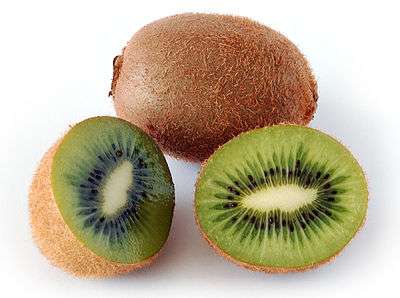
Cookbook | Recipes | Ingredients
| Basic foodstuffs
This is a list of all the fruits generally considered edible by various cultures and used for culinary purposes. Some are not widely used and would be hard to get a hold of, but they offer interesting alternatives to the common or garden varieties.
Note that this is a list of "fruits" in the culinary sense of the word, not the botanical sense of the word. Consequently, items that are botanically classified as fruits, but are usually referred to in cooking as "vegetables" (such as the tomato) will be in the vegetables section, and not here. For a discussion of the botanical vs. culinary definitions of that part of a plant called the "fruit" see Fruit at Wikipedia.
There exist also many fruits that are certainly edible and locally popular but for various reasons have not become widespread in their use. Often this is due to marketing considerations, more than anything.
Temperate fruits
Fruits of temperate climates are almost universally borne on trees or woody shrubs or lianas. They will not grow adequately in the tropics, as they need a period of cold (a chilling requirement) each year before they will flower. The apple, pear, cherry, and plum are the most widely grown and eaten, owing to their adaptability. Many other fruits are important regionally but do not figure prominently in commerce. Many sorts of small fruit on this list are gathered from the wild, just as they were in Neolithic times.
The Family Rosaceae dominates the temperate fruits, both in numbers and in importance. The pome fruits, stone fruits, brambles, and strawberry are all members of Rosaceae.
The pome fruits:
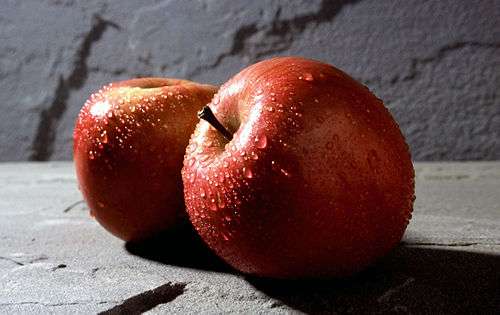
- Apple and crabapple (Malus spp.)
- Chokeberry also called cooking apple (Aronia spp.)
- Haw, the fruit of the hawthorn (Crataegus spp.)
- Juneberry or saskatoon (Amelanchier spp.)
- Medlar (Mespilus germanica)
- Pear, European and Asian species (Pyrus spp.)
- Quince (Cydonia oblonga and Chaenomeles spp.)
- Rowan or mountain ash (Sorbus aucuparia)
- Sorb or sorb apple, the fruit of the service tree (Sorbus domestica)
- Asian pear
The stone fruits, drupes of the Genus Prunus:
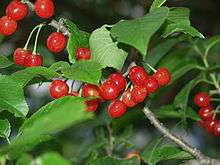
- Apricot
- Cherry, sweet, sour, and wild species (Prunus avium, P. cerasus, and others)
- Plum, of which there are several domestic and wild species; dried plums are called prunes
- Peach and its variant the nectarine (Prunus persica)
- Hybrids of the preceding species, such as the pluot
In non-technical usage, berry means any small fruit that can be eaten whole and lacks objectionable seeds. The bramble fruits, compound fruits of the Genus Rubus, are some of the most popular pseudo-berries:
- Blackberry, of which there are many species and hybrids, such as dewberry, boysenberry, and loganberry
- Tayberry, a cross between Raspberry and Blackberries
- Raspberry, several species (genus Rubus)
- Cloudberry
- Wineberry
- Goji berry
The true berries are dominated by the Family Ericaceae, many of which are hardy in the subarctic:
- Bearberry
- Bilberry or whortleberry or Blueberry (UK)
- Blueberry
- Cranberry (Vaccinium)
- Crowberry
- Huckleberry
- Lingonberry
Other berries (not in Ericaceae):
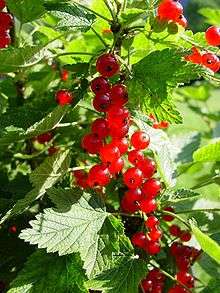
- Barberry
- Currant (Ribes spp.), red, black, and white types
- Elderberry
- Gooseberry
- Nannyberry or sheepberry (Viburnum spp.)
- Seaberry or sea buckthorn
- Wolfberry (Lycium barbarum, Lycium spp.)
Some fruits native to Asia that were not common elsewhere until the 20th century:
- Cornelian cherry
- Goumi
- Jujube
- Kiwifruit (a.k.a. the "kiwi" or Chinese gooseberry, Actinidia spp.)
- Loquat
- Mulberry (some species)
- Persimmon, Diospyros kaki
Some tree fruits native to North America that are eaten in a small way:
- Buffaloberry (Shepherdia argenta), which grows wild in the prairies of Canada
- Chokeberry (Aronia spp.)
- American grape: North American species (e.g., Vitis labrusca) and American-European hybrids are grown where Vitis vinifera is not hardy and are used as rootstocks
- Juneberry or saskatoon, which is cultivated in Canada (Amelanchier spp.)
- Pawpaw (Asimina triloba, not to be confused with Carica papaya, which is called pawpaw in some English dialects)
- American persimmon (Diospyros virginiana)
Several cacti yield edible fruits, which are important traditional foods for some Native American peoples:
Some exceptions to the statement that temperate fruits grow on woody perennials are:
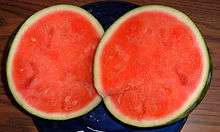
- Melon (Cucumis melo): cantaloupe and other muskmelons, honeydew
- Sunberry or wonderberry (Solanum spp.)
- Watermelon (Citrullus vulgaris)
The false fruits are not botanically fruits at all but are used as fruits in the kitchen:
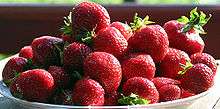
- Rhubarb
- Strawberry (Frigaria spp.)
Mediterranean and subtropical fruits
Fruits in this category are not hardy to extreme cold, as the preceding temperate fruits are, yet tolerate some frost and may have a modest chilling requirement. Notable among these are natives of the Mediterranean:
- Fig (Ficus spp.)
- Grape, called raisin, sultana, or currant when dried (Vitis)
- Pomegranate
- Date (Phoenix dactylifera)
- Mulberry
In the important genus Citrus some members are tropical, tolerating no frost. All common species of commerce are somewhat hardy:
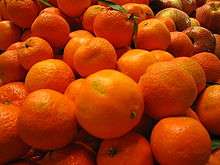
- Citron
- Grapefruit and its predecesor the pummelo (also known as the shaddock)
- Kumquat
- Lemon
- Lime (an important hybrid of the Key Lime and the Citron)
- Mandarin, clementine, tangelo, tangerine, and similar
- Orange, of which there are sweet and sour species
- Ugli fruit, a hybrid
Other subtropical fruits:
- Feijoa (Feijoa sellowiana or Acca sellowiana)
- Guava (Psidium guajava)
- Longan (Euphoria longan)
- Lychee (Litchi chinensis)
- Passion fruit (Passiflora edulis and other Passiflora spp.)
- Tamarillo (Cyphomandra betacea)
Tropical fruits
Tropical fruit grow on plants of all habits. The only characteristic that they share is an intolerance of frost.
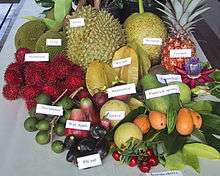

- Acerola cherry (Malpighia glabra)
- Akee (Blighia sapida)
- Banana and its starchy variant the plantain (Musacea spp.)
- Breadfruit (Artocarpus altilis)
- CamuCamu (Myrciaria dubia))
- Cempedak (Artocarpus champeden)
- Cherimoya (Annona cherimola), also called "custard apple"
- Coconut (Cocos spp.)
- Durian (Durio zibethinus)
- Guarana (Paullinia cupana))
- Guava
- Jackfruit (Artocarpus heterophyllus), also called nangka
- Langsat (Lansium domesticum), also called longkong or duku
- Lychee
- Mamoncillo (Melicoccus bijugatus), also known as the quenepa or genip
- Mango (Mangifera indica)
- Mangosteen (Garcinia mangostana)
- Papaya (Carica papaya)
- Passion fruit
- Pepino, also called: pepino melon, treemelon, bush melon, mellowfruit
- Pineapple (Ananas comosus)
- Rambutan (Nephelium lappaceum)
- Rose apple (Syzygium aquem), also called Malay apple
- Salak (Salacca edulis), also called snakefruit
- Sapodilla (Achras/Manilkara zapota), also called chiku
- Sapote
- Soursop (Annona muricata)
- Star Fruit (Averrhoa carambola), also called by the botanical name Carambola
- Tamarind (Tamarindus indica)
- Tarap
- Wax apple